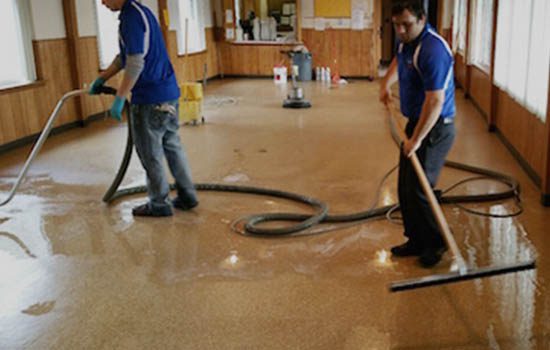

If water damage is not addressed quickly and properly, it can lead to serious structural issues, the growth of mold, and possible health hazards. Understanding the important steps of water damage restoration is a great way to minimize damage, reduce costs, and maintain a healthy living environment. This article will outline the critical stages of water damage repair, providing practical guidance to homeowners in this challenging situation.
Immediate Assessment And Response
Before dealing with water damage ensure that you and your family are safe. Cut off the power to prevent any electrical hazards. Especially if water reached electrical appliances or outlets. Do not walk in water standing if you do not have the right protection.
It’s important to find and stop the water source. Common sources can include burst water pipes, roof leaks, appliance malfunctions, or natural disasters. If you identify the source of the leak, stop the water immediately by turning off the main water or covering the roof with tarps.
Document the extent and nature of the damage in order to receive insurance. Take photos and videos of all affected areas, such as walls, floor, furniture, and personal belongings. Detailed documentation is essential to substantiate your insurance claims and guarantee adequate coverage of restoration expenses.
The Drying and Removal of Water
To avoid further damage, you must remove the standing water as soon as possible, as much water as you possibly can, and remove it with buckets or wet/dry pumps. Professional water damage repair services are equipped with the right equipment to efficiently remove water in large floods.
To restore the damage caused by water, you must first dry out all affected areas. Use fans and humidifiers to speed up the drying-up process. Removing water from walls, flooring, and furniture can prevent structural and mold damage.
Materials with pores, like drywall insulation and carpeting, can absorb water, which in turn will harbor mold. To avoid contamination, it is best to remove or discard materials that are severely damaged. Salvageable material should be cleaned and dried.
Cleaning and Disinfection
Once the surface is dried, clean and disinfect to eliminate all contaminants, including bacteria and mold. Use the appropriate cleaning agents and disinfectants on each material. Pay attention to all areas exposed to or submerged in contaminated liquid.
In as little as a day, mold may start to form. If you notice musty odors and discoloration on your surfaces, it may be time to inspect for mold. You can either use professional mold removal services or mold removal chemicals to eliminate mold infestations. Mold remediation provides a safe, clean environment.
Restorative and Repair Services
Water damage may weaken the structural components of your home, including walls, ceilings, and floors. You will need to assess the extent of damage and repair the home. It could be replacing drywall, strengthening beams, or fixing the flooring.
Evaluate the condition or personal belongings that may have suffered water damage. Furniture, electronics, textiles, and fabrics may require professional cleaning. You may want to consider the sentimental as well as monetary values of an item when deciding on whether or not to restore it.
Prevention and Future Preparedness
In order to protect your property, you must prevent further water damage. Regularly inspect your roofing system, gutters, and plumbing. Install water-leak detectors and a sump pump in order to detect problems with water and take action quickly. Grading around your house is necessary to direct water away.
Develop an emergency action plan to prepare yourself for any future water damage. You should identify key contacts like restoration companies and emergency plumbers. Make sure you have their contact info readily available. Family members should be educated on what to do if water damage occurs, such as turning off electricity and the water supply.
Conclusion
Water damage restoration is a complex process that involves many steps. From the initial response and water removal through to cleaning, repairs, prevention, and repair. Following these steps allows homeowners to minimize damage, maintain a safe home environment and preserve the value of a property. Professional restoration services offer the expertise and tools needed to complete a full recovery in severe cases. Being proactive and prepared for future events can help homeowners face water damage head-on.
Find out when to upgrade your industrial storage solutions to improve efficiency, boost safety, cut…
Disposable e-cigarettes are redefining how nicotine is consumed—and they're doing so with growing support from…
For smokers seeking a healthier way to enjoy nicotine, innovation has brought forward one of…
Discover the incredible teamwork of bees and how their collaboration sustains ecosystems. Learn how we…
A night out at a top-notch bar with an incredible view can be an unforgettable…
Learn the critical safety features every go-kart track needs. From barriers to emergency solutions, these…